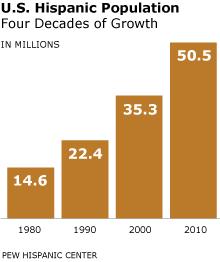Posts in "Hot Topics"
August 29, 2013
Filed Under: Hot Topics
Prospecting is based on a simple principle: The more that you do it, the greater your chances of reaping rewards. As a radio sales professional, you will have key accounts for which you are responsible. However, in order to be successful in the radio sales arena, it is important to recognize you have to keep current clients happy as well as add new clients to your sales portfolio.
Read More…
August 22, 2013
Filed Under: Hot Topics
 On August 1, 1981, MTV debuted with the The Buggles’ song, “Video Killed the Radio Star.” Thirty-two years later MTV has evolved and is no longer playing music videos. As far as radio; most stations are still pumping out the music and the hits.
On August 1, 1981, MTV debuted with the The Buggles’ song, “Video Killed the Radio Star.” Thirty-two years later MTV has evolved and is no longer playing music videos. As far as radio; most stations are still pumping out the music and the hits.
So now we hear that the internet is the next piece of technology that is going to kill the radio. If you believe the digital audio services claims, this has already happened. The trouble is there are no facts to back up these self-promoting statements. In every market we examined, radio has a ninety-plus percent reach. That means that just about everyone tunes to the radio in an average week. There goes the belief that radio is a dying medium.
Read More…
August 15, 2013
Filed Under: Hot Topics
On July 28, the world’s second- and third-largest media groups officially announced their intentions to merge by the 1st quarter of 2014. Omnicom and Publicis will form Publicis Omnicom Group, growing to twice the size of former #1 media group WPP in terms of revenue.
Once the dust settles, there will still be one question that can only be answered in time; “Is Bigger Better?” Considering that these are massive media groups and there are plenty of variables going into this merger, we’ll leave the details at the door and try instead to tackle the bigger picture.
Read More…
August 8, 2013
Filed Under: Hot Topics
A quick search on Twitter of some keywords will bring up a handful of tweets from people who received a crisp dollar bill from Arbitron as an incentive to keep track of their radio listening. Receiving cold hard cash in the mail or being asked to wear a meter that is reminiscent of an early ‘90s pager is kind of exciting. It’s exciting enough that many people would want to tweet about it … or share it on Facebook … or post it to Tumblr.
The vast number of ways a social media user can express themselves to the world has made Arbitron’s quest for anonymity a serious headache.
Read More…
July 31, 2013
Filed Under: Hot Topics
Last month, Arbitron released TAPSCAN 11.2. The latest enhancements to the newest version of TAPSCAN Web include the capability to schedule non-traditional revenue in the NTR Schedule tab, new features in Research Reports, and more browser support. The following is a summary of the latest improvements included in TAPSCAN 11.2.
Read More…
July 30, 2013
Filed Under: Hot Topics
Check out our guest article on Arbitron’s Not Your Average Quarter-Hour programming blog here.
July 25, 2013
Filed Under: Hot Topics
Fastest-Growing Segment
Hispanics continue to be the fastest-growing segment of the total U.S. population, and the influence of this segment of the population is being seen in all aspects of the culture. Reaching these consumers is becoming an important aspect of many media buys.
Many of the top metros have experienced a significant influx of Hispanics migrating to their areas. The Hispanic population percentage increases have skyrocketed to double-digit growth in recent years. The 2010 Census counted 50.5 million Hispanics in the United States, making up 16.3% of the total population. The nation’s Latino population, which was 35.3 million in 2000, grew 43% over the decade. In 2012, Hispanics made up 53.1 million/16.9% of the U.S. population, according to U.S. Census Bureau: State and County QuickFacts.
Read More…
July 18, 2013
Filed Under: Hot Topics
Get expert advice as you prepare for the critical Fall ratings period.
Key Points:
- The 2013 success of your station is dependent on what you do in the next few weeks.
- Ask the experts and get some free help.
- Prepare for success using all the tools at your disposal, especially those that cost you nothing.
The Fall book is closer than you think
No matter how the first half of the year has gone for your station, the next few weeks are critical. How you impact listening during the critical Fall ratings period will determine how 2013 ends for you. Right now you are either preparing to win or preparing to fail as you determine your programming and marketing strategy, and time is of the essence.
Read More…
July 11, 2013
Filed Under: Hot Topics
The new book just released. Programming is celebrating as the station has shown growth with its AQH share. Just down the hall, the sales team may be looking at the same book with little emotion or excitement. How can these two groups, who are both rooting for higher audience levels, have such different reactions to the same outcome?
This dilemma is a result of how sales and programming judge audience growth. While both teams focus on Average Quarter Hour (AQH), they look at different benchmarks. Programmers look at AQH share, while sales people look at AQH ratings. So what is the difference?
Read More…
June 27, 2013
Filed Under: Hot Topics
Is it the eyes? The hair? … Wait, that’s a different blog.
When your monthly PPM numbers roll off the computer – what is the first thing you look at? The easy answer is overall share. If it’s good, everyone’s happy and we tend to wait for the next round. If it’s bad, we look for answers.
Either way, a closer examination of both your numbers AND Arbitron’s performance can help you predict the future course of events for your station. More importantly, it can prevent you from knee-jerk reacting to some bad news.
Read More…

